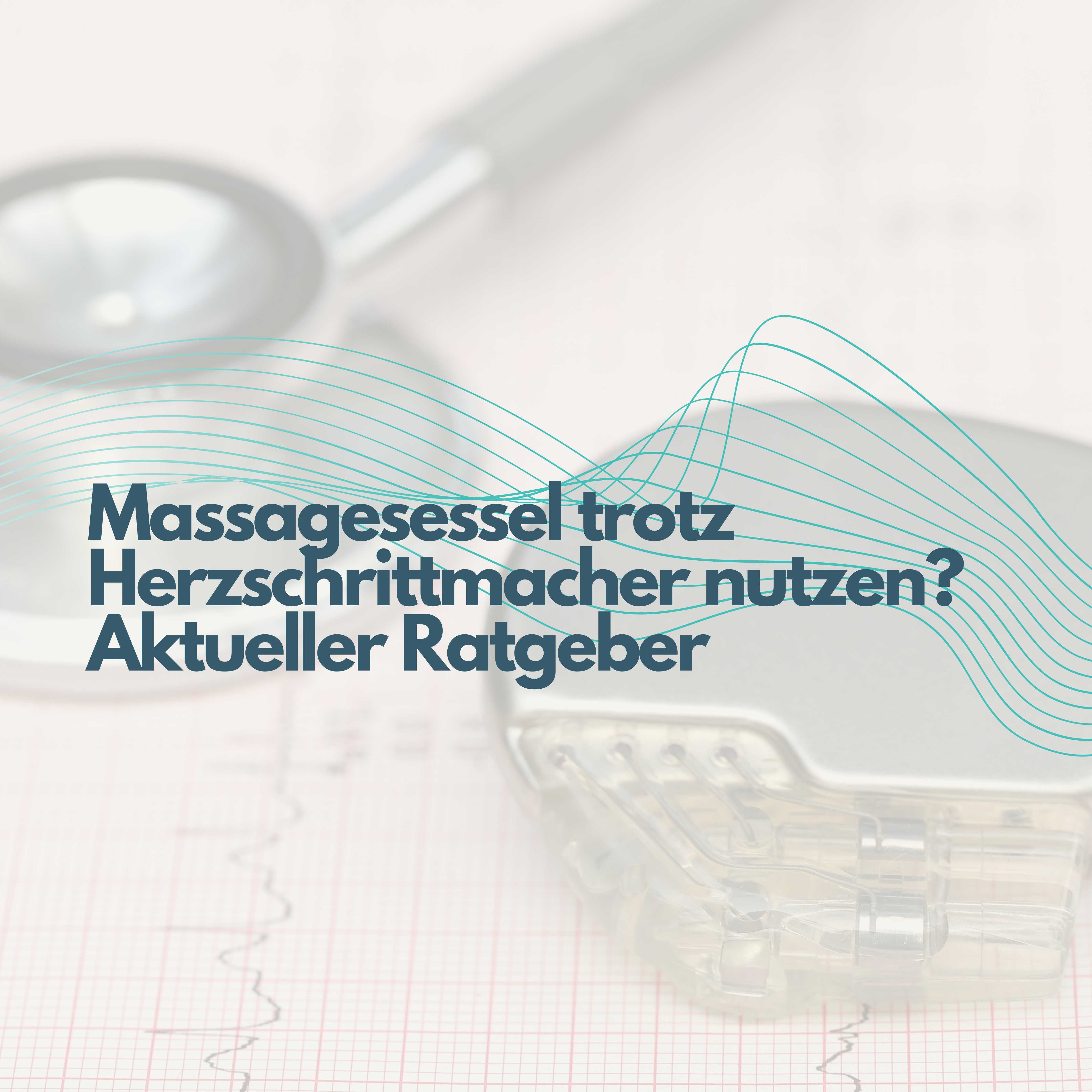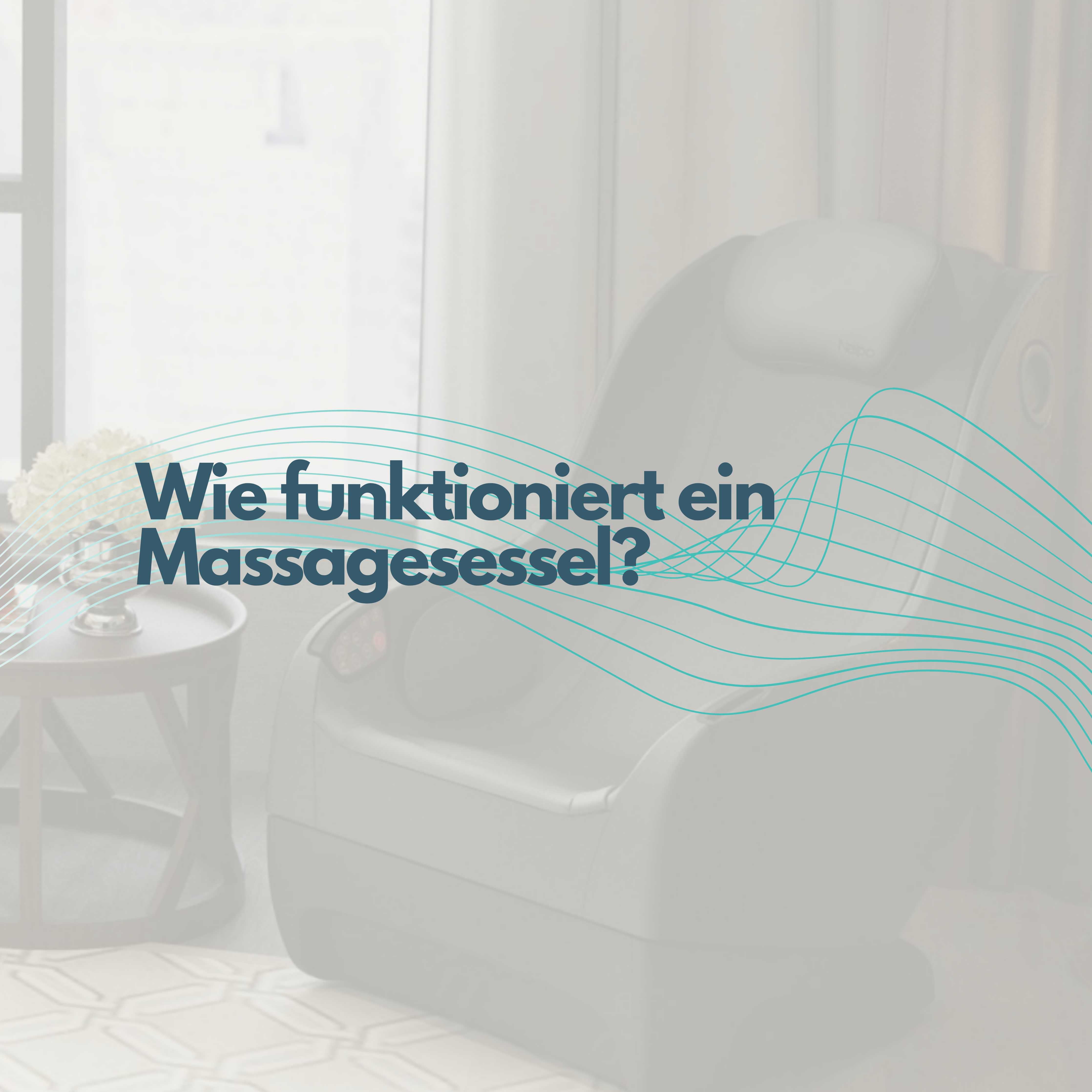
Massage & massage chair despite a pacemaker?
Many household appliances such as microwaves, washing machines or even cell phones have built-in magnets and emit magnetic fields when in use, which can have a negative effect on people with pacemakers – or so you might think.
But what effect do massage chairs actually have on pacemakers?
In fact, modern pacemakers have become safer and more resistant to magnetic fields every year.
Most conventional household appliances, such as the microwave or washing machine mentioned above, no longer cause any problems.
However, there are certain devices that people with pacemakers should keep a few centimeters away from or even avoid.
But why actually?
Find out more below!
Table of contents
First of all: What is a pacemaker?
Only a few centimeters in size, a pacemaker (abbreviated: HMS) is an “active implant.”
An “active implant” is a device that is inserted into the body and partially or completely replaces lost bodily functions and is powered by an electrical power source such as a battery.
Pacemakers are usually implanted under the skin or in the chest muscle below one of the two collarbones and are connected directly to the heart.
The bodily function for which the pacemaker is used is to monitor and stimulate the heartbeat activity.
This means that if the heart beats too slowly, the HMS gives it an electromagnetic pulse – a slight shock, so to speak – and thus forces the heart to maintain its natural rhythmic beat.
A rhythmically beating heart ensures that oxygen and blood are pumped through the body at a steady pace.
If the heart beats too slowly due to illness or injury or if its function is impaired, cardiac arrest and death can result due to the interruption of blood circulation.
A pacemaker is therefore vital for people with such an illness or injury, and people who have an HMS implant depend on its proper and permanent function.
However, strong magnetic fields can disrupt or even significantly impair this vital function.
Interesting: How a pacemaker is implanted
How do magnetic fields affect HMS function?
An HMS consists roughly of an electrode, a battery, a logic unit, a pulse generator and an ECG measuring unit.
The electrode is the connection point between the heart and the pacemaker.
Electrical impulses, which are emitted with each heartbeat, are transmitted to the ECG measuring unit via these.
The measuring unit summarizes the pulses in an electrocardiogram (ECG) and the logic unit determines, based on the measured values, when an electromagnetic pulse must be generated by the pulse generator and how strong this pulse must be.
Magnets generate electromagnetic fields that influence the flow of current.
These fields are invisible and penetrate everything – including the human body.
Electrical impulses generated during a heartbeat are also current flows and can therefore be influenced by magnetic fields.
In short, strong magnetic fields can distort electrical impulses transmitted from the heart via the electrode and the HMS or add entirely new electrical signals.
This distorts the ECG created by the measuring unit and the logic unit sends the wrong pulse to the pulse generator or, in the worst case, stops it altogether.
Electromagnetic fields can thus interfere with the pacemaker's ability to generate the right pulse at the right moment.
How high are the risks today?
Pacemakers have been around for over 70 years.
Since 2002, the number of people with HMS in Germany alone has more than doubled.
At the same time, technology has become dramatically more accessible and practical over the past 20 years.
Modern electronic devices such as mobile phones or massage devices are found in almost every household and all have built-in magnets that generate magnetic fields when used.
However, despite the increase in HMS patients and magnetic fields in everyday life, cases of HMS dysfunction have decreased in recent years.
Modern HMS implants are high-tech.
In addition to the components mentioned above, a data storage unit and a programming unit are now also built into the HMS.
This means that the HMS is not solely dependent on the measured ECG values to generate the correct pulse, but can, through clever programming based on previously measured and stored data, detect when a new ECG has been influenced by a magnetic field.
In such a case, the HMS switches to an automatic standard mode and forces the heart to beat at a regular rate until the wearer is outside the disturbing magnetic field again.
The transition into such a mode is usually not even noticed by the HMS wearer.
The magnetic field in question therefore has no noticeable influence on the wearer’s well-being.
Another important advance is the design of the electrode, the most sensitive part of the pacemaker.
This process is becoming more modern and advanced every year. Models are now on the market that have two electrodes, halving the risk of interference from magnetic fields.
Modern pacemakers with bipolar electrodes can tolerate magnetic fields with a frequency of up to 650 Hz without interference.
Most electrical devices in everyday life are therefore harmless, as long as they are not too close or directly to the pacemaker when in use.
Basically, the closer the source of the magnetic field is to the pacemaker, the stronger the field and the higher the risk of interference.
Electrical devices in Germany are therefore subject to strict regulations and specifications regarding the permitted strength of the magnetic field generated.
Not least because extremely strong magnetic fields pose a health risk even for people without pacemakers.
What is the connection to massage chairs?
Massage chairs, like any other modern electrical device, also have built-in magnets.
In addition, various additional features such as surround sound speakers, mounted tablets and more generate their own small magnetic fields.
Someone who uses a massage chair is exposed to these various magnetic fields – often for more than half an hour.
For the average user, massage chairs are completely safe.
But how dangerous can something like this be for HMS carriers?
Knowledge is power. In this case, knowledge is caution.
In most cases, the wellness devices are also safe for HMS wearers.
Although massage chairs are electrically operated, they are usually designed so that the motor – the source of the magnetic field – is located deeper in the internal gear system and not directly under the seat upholstery.
The smaller magnetic fields generated by the various luxury features are not strong enough to cause interference with the HMS.
However, a lot of risk assessment also depends on the wearer's HMS type.
The sensitivity of a pacemaker is often individual and adjusted by the cardiologist as needed.
Some wearers need to use the features of their HMS more often than others and are more susceptible to magnetic interference, even if they have the same model implanted.
It is absolutely important for a wearer to know what type of HMS is implanted and how sensitive it is set.
Every HMS wearer should have a pacemaker card containing important information and consult their cardiologist about the tolerable limits of their personal pacemaker.
It is also advisable to have a magnetic field measuring device with you to measure the strength of existing magnetic fields.
Conclusion
In principle, you should be able to use a massage chair with a modern pacemaker.
However, all information presented here is not intended as a substitute or alternative to information provided by doctors or therapists.
Please consult your doctor whether you can use your HMS with a massage chair.
Sources
https://www.thieme-connect.com/products/ejournals/abstract/10.1055/a-1206-4887
https://www.thieme-connect.com/products/ejournals/abstract/10.1055/s-0028-1104156








Leave a comment
This site is protected by hCaptcha and the hCaptcha Privacy Policy and Terms of Service apply.